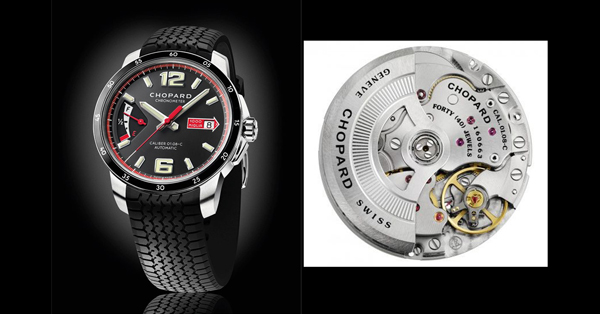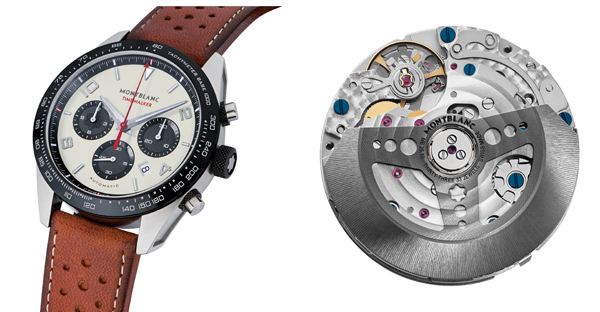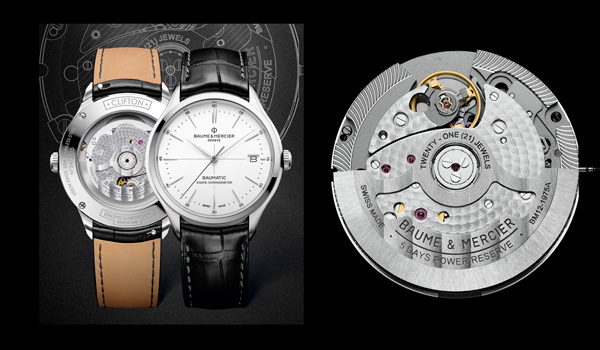During the 2010s, the Swatch Group successively announced its plans – involving varying degrees of imminence – to phase out movement supply to third parties. The countless brands relying on reliable and cheap ETA products would have to accept price hikes and dwindling deliveries of non-personalized movements. Confronted with this decision and its progressive implementation, many brands turned to alternative suppliers. Sellita, in particular, which provides calibers interchangeable with those produced by ETA, took the lion’s share of these transfers. A few more upscale manufacturers such as Soprod and Vaucher lowered their prices to meet demand, which has continued despite the crisis endured by Swiss watches. These replacement calibers deliver more or less the same performance as ETA calibers, which in fact remain available…
Frankly, I just liked these design cues because they mix up the style of a rectangular watch. Sure, it would be easy to make a thin rectangular situation, slap a level crystal on it, and call it a day. Together with the Baume & Mercier Hampton, you really do have that look when viewed from straight on, but if viewed at any type of angle, you see the design work they put in the watch to make it stand out out.Tucked into the case (and viewable through the caseback) is a 4 Hz automatic motion, which of course, pushes the three palms and the date display down at 6 o’clock. While I do normally enjoy watching a date display on a watch (especially one that is likely to view daily wear obligation, not worn just on special events), it feels as though it might be a bit of a miss. With the numerals following the straight edges of the case and keeping things balanced, the date window feels slightly off-kilter, both in terms of placement and sizing. These two facets are, of course, restricted with a date wheel (round) in a situation of the shape. It may just be me, but I think that the general design would be better served by deleting the date complication. And, while we’re at it, the “automatic” text: they do so to distinguish it from the quartz model, but it appears to just be a distraction on the dial.What should not be altered, however, is the handset. For starters, we have a three-hander here, and I like using a second hands on the movement to let me know the watch is living. Next up, lets talk measurements on the sword-shaped hands on. On a rectangular case, it can be tricky to get the lengths right so they do not appear to crowd the brief side of the dial or get dropped on the long run. On the Baume & Mercier Hampton, they did a nice job of balancing the two, while maintaining the hands in proportion to one another. Finally, let’s discuss the bluing.

The Bulgari Octo Roma is powered by the caliber BVL-191 © Bulgari
Freedom
In parallel, 20 or so brands have opted to acquire greater and in some cases total movement manufacturing independence. They have developed or commissioned exclusive movements. In certain instances, they have undertaken to produce them. Yet these calibers feature a major drawback : they are simple. We are not talking here about chronographs, tourbillons or complex specialties produced in small series, whose errors can be corrected as one goes along. They are instead base movements, generally of the three-hand plus date self-winding variety. These ‘workhorses’, like ETA calibers, are the backbone of the mechanical watch industry. Produced in large series, they must remain economical so as not to upend the final price of watches. And they must feature impeccable reliability, which is a tough ask for mass production.

The Chopard Mille Miglia GTS Power Control is powered by the caliber 01.08-C © Chopard
Benefits
This costly and difficult choice has led these brands to embark on industrial paths involving long-term commitments. It has proved decisive, since these in-house calibers now dubbed ‘Manufacture’ movements have brought fresh diversity to the watchmaking scene, and increased benefits for watch lovers. The latter have thus been able to enjoy the advantages offered by calibers such as Bulgari’s BVL-191, the MT5601 and its variations from Tudor, the 1887MC from Cartier, the Chopard 01.08-C and the UN-118 by Ulysse Nardin, among other successful ventures. These movements are tailored to contemporary demand, with features including autonomy ranging from 60 to 65 hours, compared with 45 previously ; a large size ; as well as regulating organs sometimes made from silicon for enhanced precision timekeeping, often chronometer-certified by the COSC. Most importantly, the cost increases due to these transitions have had a very limited impact on the final price. And when they do involve a significant rise, it is because the benefits have significantly increased, as in the case of Caliber 110 by Oris, with its 10-day power reserve.

The Montblanc TimeWalker Manufacture Chronograph is powered by the caliber Montblanc MB 25.10, originating from Valfleurier © Montblanc
At last !
One particular case worth a closer look is ValFleurier. The discreet Richemont Group movement-making company supplies components to brands such as IWC, Panerai and Cartier, and has been offering complete and affordable calibers for several years. Its catalog includes an ETA 2824-type column-wheel chronograph movement now used by Montblanc in its TimeWalker watches. It has however taken a whole new step with the self-winding caliber that Baume & Mercier has fitted in its Clifton Baumatic. This 2018 new model features a 120-hour power reserve, COSC certification, a double-core silicon balance spring and an enlarged date display. It sells for 25% less than its equivalent with an ETA caliber, offering eloquent proof of the benefits that well-managed – albeit belated – industrialization can offer watch aficionados.

The Clifton Baumatic is powered by the caliber Baume & Mercier BM12-1975A, Originating from Valfleurier © Baume & Mercier
 Paul O’Neil’s advice, Chief Editor of WorldTempus.com
Paul O’Neil’s advice, Chief Editor of WorldTempus.com
It takes between three and five years to develop a new watch movement from scratch, so it is only over the past few years that we have seen the first genuine responses to the Swatch Group’s decision to throttle back supply of its ETA movements at the beginning of the decade. Since then, the market situation has changed considerably and ETA is now actively seeking customers. Those brands who invested in their own vertical integration are now reaping the rewards at ETA’s expense with some incredible in-house movements. The Baumatic mentioned by David sets a new benchmark. Scan the QR code for all coverage on WorldTempus related to in-house movements.




